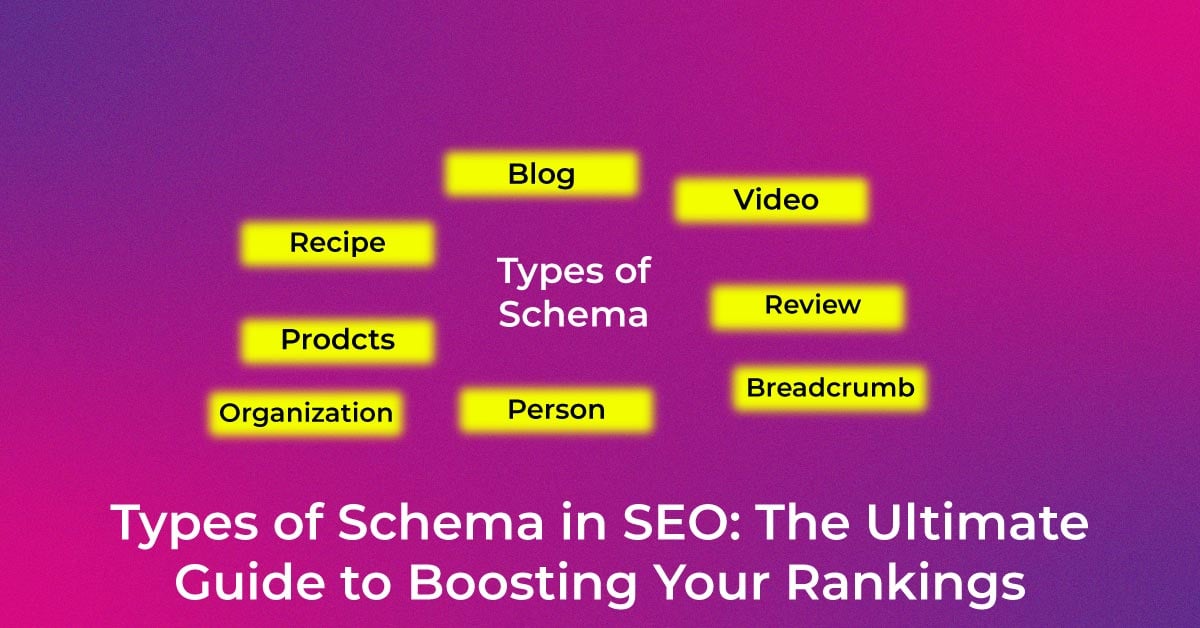Definition of Article Schema
Article Schema refers to a specific type of structured data that is designed to help search engines better understand the content of an article on a website. It annotates elements within your content so that search engines can display it in a more informative and appealing way in search results. Whether you’re writing investigative reports, blog posts, or news articles, using Article Schema can make your content stand out and communicate more effectively with search engines.
Importance of Article Schema in SEO
The implementation of the Article Schema is a significant factor in your SEO strategy as it assists search engines in categorizing and indexing content more proficiently. This enhanced understanding afforded to search engines often translates into better visibility in search results for your articles. By leveraging Article Schema, you signal to search engines the relevancy and utility of your content, which can lead to improved rankings. Furthermore, when search results come with rich snippets that draw from your structured data, potential visitors get a preview of what to expect, which can lead to higher click-through rates and increased user engagement.
Types of Article Schema
1. General Article Schema
General Article Schema serves as the foundational structure for marking up a wide variety of content on your website. It provides a set of properties that you can use to define articles, opinion pieces, or other forms of written content. When you integrate Article Schema into your web pages, you outline crucial details such as the headline, author, publication date, and main body of the article. This basic schema acts as a starting point for search engines to interpret your content and present it appropriately in search results, making it a versatile and critical tool for any content that doesn’t fit into a more specific schema category.
2. Specific Types of Article Schema
Delving into more specific types of Article Schema allows you to tailor the structured data to the nature of your content, thus sharpening the focus for search engines and enhancing content discoverability. Each specialized schema type incorporates additional properties for describing content more precisely, which can lead to more targeted search results and better user experiences.
3. NewsArticle
The NewsArticle schema is designed for content that reports on current events or topical subjects. By using this schema type, you provide search engines with context-specific metadata about the news content you’re publishing, such as the publication date, author, and a specific section of your publication—if applicable. Here’s a closer look at what makes NewsArticle schema essential:
- Dateline: A dateline property can be added to clarify where and when the news story was originally reported, enhancing authenticity.
- Print Edition: For news content that also appears in print, details about the print version can be included.
- Headline: Crafting a compelling headline is important, as it’s often prominently displayed in search results.
- Byline: Identifying the article’s author can establish authority and trustworthiness.
- Article Body: Marking up the main content ensures that search engines can capture the essence of the article.
Implementing the NewsArticle schema properly allows your journalistic content to gain greater visibility and attract more engagement from an audience seeking the latest news.
4. BlogPosting
The BlogPosting schema is the go-to structure for personal or corporate blogs. This schema type is optimized for content that has a less formal or more conversational tone compared to a NewsArticle. Applying BlogPosting schema to your blog content enables search engines to better classify and showcase it in search results, with rich snippets that can include:
- Comment Count: Reflecting user engagement, the number of comments can be displayed, highlighting interactivity.
- Author or Contributor: Giving credit to content creators, which can increase credibility and build personal or brand authority.
- Publish Date: Indicating when the post went live, which is particularly relevant for timely discussions or seasonal topics.
- Blog Title: Highlighting the subject of the blog post, helps users quickly understand what the post is about.
- Article Section: Categorizing the blog post within a particular section or category of the website for better content organization.
Incorporating the BlogPosting schema for your blog content not only helps in getting favorable positions in SERPs but also encourages user interaction by showcasing elements that are unique to the blogging experience.
5. AdvertiserContentArticle
The AdvertiserContentArticle schema is a specialized schema markup designed for content that has been sponsored or created as part of advertising and promotional efforts. This structured data helps clarify the nature of such content to search engines, which can lead to a more accurate representation in search results. It’s crucial to maintain transparency with your audience through this schema, as it denotes:
- Sponsor: The entity that paid for the content can be indicated, helping to maintain trust with your audience.
- Published Time: Knowing when an advertorial was released can be relevant, especially for time-sensitive offers or information.
- Impressions Counter: If available, showing how many times an ad has been seen can emphasize popularity or reach.
- Call to Action: Including the primary action you want readers to take, which can be highlighted in rich snippets or search results.
- Educational/Informative Content: While promotional, also ensure it provides value or information to readers, not just advertising.
Using AdvertiserContentArticle schema properly ensures that while your content is promotional, it is also appropriately classified and users can make informed decisions about the credibility and intent of the content they are consuming.
6. MedicalScholarlyArticle
The MedicalScholarlyArticle schema is tailored for in-depth research papers or articles within the medical field. This schema provides important metadata that impacts how such specialized content is understood and displayed by search engines, specifically emphasizing scholarly and research-oriented elements:
- Peer Review Status: Represents whether the article has been peer-reviewed, a key factor in establishing the reliability of medical research.
- Medical Specialty: Details the particular branch of medicine that the article pertains to, aiding in directing the content to the relevant audience.
- Abstract: A summary of the article’s contents, offering a glimpse into the research without access to the full text.
- Authors/Researchers: The credentials and affiliations of the article’s authors, which contribute to the authority and trustworthiness of the information.
- Journal: The medical or scientific journal where the article has been published, providing context for the article’s academic standing.
Implementing MedicalScholarlyArticle schema marks your content as a reliable information source, enhancing visibility among professionals and individuals seeking authoritative medical research and discussions.
7. AnalysisNewsArticle
The AnalysisNewsArticle schema type is specifically constructed for content that goes beyond reporting the facts by providing in-depth examination, interpretation, and discussion of news topics. These pieces often contain expert opinions, analysis, and critical insights into current events. When you use this schema type, you make it known to search engines that your article involves a more detailed exploration, which can be pivotal for readers seeking a deep understanding of an issue. Key elements of the AnalysisNewsArticle schema include:
- Expert Authorship: Crediting authors with relevant expertise or a notable track record in the field under discussion.
- Methodology: Describing the research or analytical methods used, which can bolster the credibility of the analysis.
- Argumentation: Structuring the content to highlight key arguments and conclusions reached in the analysis.
- Sources and References: Citing data, reports, or other sources that inform your analytical piece, supporting the facts presented and arguments made.
- Conclusions and Implications: Detailing the potential impact or future outlook based on the analysis, helping readers to extract actionable insights.
Implementing the AnalysisNewsArticle schema can amplify the reach of your analytical content to an audience that values thorough scrutiny and informed opinions on complex subjects.
Benefits of Implementing Article Schema
Enhanced Search Visibility
Integrating Article Schema into your web content can significantly enhance search visibility. Search engines use this structured data to understand content more deeply and to generate rich snippets, such as featured images, star ratings, and author information, which appear alongside your listings in search results. This additional visual appeal not only draws the eye of users but also conveys a snapshot of the article’s value, encouraging higher click-through rates. Moreover, as search algorithms become increasingly sophisticated, the use of Article Schema can position your content as relevant and valuable, which may positively influence its search rank over time.
Improved Rich Snippets in Search Results
Rich snippets in search results, derived from Article Schema, enhance the user’s search experience by displaying a preview of the content’s most relevant aspects such as the title, image, author, and publication date. They can also include additional interactive features such as star ratings and a number of reviews. By improving the richness of snippets, you make your content more enticing and informative at a glance, which can be a decisive factor for users when choosing which link to click. The improved visual and informational cues provided by rich snippets not only differentiate your content from competitors on the SERP but also signal quality and relevance, which can lead to increased traffic and higher engagement.
Better Understanding by Search Engines
Article Schema enables search engines to “read” and comprehend your content with greater accuracy and detail. By translating your articles into a language that search engines are designed to understand, you essentially guide them through the structure of your content, clarifying which parts are the main body, headlines, published dates, and more. As a result, search engines are less likely to misinterpret or overlook crucial information about your articles, thus increasing the likelihood of your content being matched with relevant queries. This improves the chances of your articles surfacing in SERPs for topics closely aligned with the interests and needs of your target audience, ultimately supporting more effective SEO performance.
How to Implement Article Schema
1. Choosing the Right Type of Article Schema
Selecting the appropriate type of Article Schema for your content is critical to achieving the best possible results in search engine optimization. Assess the nature of your article—whether it’s a news piece, a blog post, an in-depth analysis, or a scholarly article—and choose the corresponding schema type that best represents it. This decision should be guided by your content’s objectives, target audience, and the specific elements you wish to highlight in search results.
When you match your content with the precise schema—like using NewsArticle for journalistic content or BlogPosting for more informal articles—you tailor the structured data to reflect your content’s essence. This targeted approach ensures that search engines have a clearer understanding of the content’s context and purpose, enhancing the likelihood of your articles appearing in search results to interested users.
2. Using JSON-LD for Implementation
When implementing Article Schema, using JSON-LD (JavaScript Object Notation for Linked Data) is highly recommended. It’s a method favored by major search engines like Google and Bing for its simplicity and ease of use. With JSON-LD, you can neatly organize the structured data in a script tag anywhere within the HTML of a webpage, most commonly in the head or the bottom of the body section.
By opting for JSON-LD, you ensure that your structured data is both machine-readable and detached from the main content of the page, which makes it easy to maintain and update. Furthermore, JSON-LD’s format allows you to clearly articulate the hierarchical relationship between various elements, such as articles and authors, leading to a superior understanding by search engines.
Make sure to create a clear and concise script that encapsulates all the necessary properties of your chosen Article Schema, and rest assured that your SEO efforts will benefit from an effective and future-proofed structured data strategy.
Article Schema JSON LD Example
<script type=”application/ld+json”>
{
“@context”: “https://schema.org”,
“@type”: “BlogPosting”,
“mainEntityOfPage”: {
“@type”: “WebPage”,
“@id”: “https://www.example.com/blog/article-title/”
},
“headline”: “Article Title”,
“description”: “A brief, engaging summary of your article.”,
“image”: “https://www.example.com/images/article-image.jpg”,
“author”: {
“@type”: “Person”,
“name”: “Author Name”,
“url”: “https://www.example.com/author/author-name/”
},
“publisher”: {
“@type”: “Organization”,
“name”: “Your Website Name”,
“logo”: {
“@type”: “ImageObject”,
“url”: “https://www.example.com/images/logo.png”
}
},
“datePublished”: “2024-04-29T10:00:00+00:00”,
“dateModified”: “2024-04-30T15:30:00+00:00”
}
</script>
3. Validating Your Schema Markup
Once you’ve generated your Article Schema markup, it’s essential to validate it to ensure that it is error-free and that search engines can parse it correctly. Use tools like the Schema Markup Validator and Google’s Rich Results Test to assess the validity of your code. This two-fold testing approach provides a comprehensive evaluation:
- Schema Markup Validator: Check for errors and warnings that could affect how search engines interpret your Schema markup.
- Google’s Rich Results Test: Confirm that your page is eligible for rich results, which will make your content stand out in the SERPs.
If either tool flags issues, address them promptly to avoid potential misunderstandings or misrepresentation of your content by search engines. Correct validation ensures that your Article Schema is in good standing, enhancing your chances for improved visibility and rich result features in search results.
Best Practices for Article Schema Implementation
Keeping Your Schema Updated
Maintaining an up-to-date Article Schema is vital as your content and search engine algorithms evolve. Regularly review and refresh your schema to reflect any changes in your articles or updates in structured data guidelines. Changes like modifying an article’s author, updating publish dates, or adding new sections warrant an immediate schema update to ensure accuracy. Here’s how to stay on top of your schema and ensure it remains a reliable reflection of your content:
- Review the schema after every significant content update.
- Watch for changes in search engine guidelines relating to structured data.
- Use automated tools where possible to scale the process across large websites.
Staying vigilant with your schema updates tells search engines that you are committed to providing users with the most current and accurate information, which can foster trust and authority in the long run.
Monitoring Performance and Making Adjustments
Keeping a close eye on the performance of your Article Schema is essential in ensuring it remains effective over time. Use Google Search Console’s Enhancements section to monitor the health of your pages with structured data. There, you’ll be able to see:
- The number of pages with valid schema markups.
- Warnings or issues that need attention.
- Trends in how your content performs in search over time.
If Google detects any issues, you’ll have clear guidance on what needs to be fixed and can even ask for a re-crawl once adjustments have been made. Furthermore, consider leveraging platforms like Oncrawl to analyze the extent and effectiveness of your structured data across your website. This detailed analysis can reveal insights on where to improve your schema and identify opportunities to introduce structured data where it does not exist.
By routinely assessing your markup’s performance and making necessary adjustments, you ensure that your Article Schema is contributing positively to your SEO goals and is consistently aligned with best practices.
Avoiding Common Mistakes in Schema Markup
Using Incorrect Schema Types
Using the incorrect type of schema markup is a common pitfall that could confuse search engines and lead to less-than-optimal search results. For instance, applying NewsArticle schema to a standard blog post or using BlogPosting for a medical research article can misrepresent your content, which may affect its credibility and ranking.
Always ensure that the schema type mirrors the actual content of your web page. For examples:
- A news article should use NewsArticle schema, highlighting timely and current event specifics.
- A blog entry should be marked up with BlogPosting schema, prioritizing a more informal or opinion-based structure.
Mismatched schema types can also mislead users, leading to poor user experience and potentially increased bounce rates. It’s crucial to audit your markup regularly and update any misplaced schema to maintain the integrity of your content both for search engines and your audience.
Missing Required Properties
Missing required properties in your Article Schema markup can lead to the schema not being recognized by search engines, which subsequently prevents the rich snippets from displaying in search results. To avoid this issue, ensure that you include all mandatory properties such as:
- @type: To clearly specify the type of content you are marking up.
- headline: To define the title of the article.
- image: To provide a visual that represents the content.
- datePublished: To inform when the article was first made available.
- articleBody: When applicable, to include the complete text of the article.
It’s worth noting that search engines may update what is considered ‘required’ over time, so staying current with schema documentation and using validation tools are critical steps to ensure no required property is overlooked.
If a required field is missing or if the provided information is invalid, the Article Schema will not function as intended, which could impact your site’s performance in search results. Therefore, meticulous attention to detail is essential in schema implementation.
Implementing Schema on Irrelevant Content
Implementing schema on content that it isn’t relevant to can be a major misstep, leading to search engines misunderstanding the context of your pages and potentially penalizing your site for misleading markup. It’s imperative to apply Article Schema only to content that actually constitutes an article, like news stories, blog posts, and scholarly articles. Misapplying schema to non-article pages such as contact information, product listings, or homepages will not improve SEO and can, in fact, harm it.
Always match the schema type with the content in question and resist the inclination to add schema as a means to improve visibility for unrelated content. Proper implementation involves a strategic approach where relevance and precision take precedence over the indiscriminate use of markup.
Not Testing Your Schema Markup
Forgoing the testing of your schema markup is a significant error that can lead to missed opportunities and potential issues with how your content is displayed in SERPs. Always take the time to test your schema with tools like the Schema Markup Validator and Google’s Rich Results Test before deploying it on your site. These tests can alert you to errors and validate that your markup is correctly structured for search engines to parse.
Testing is a preventive measure that ensures your content reaps all the benefits associated with correct schema implementation such as enhanced visibility and the potential for rich result features. Skipping this step may lead to inaccuracies that could mislead search engines and users alike, undermining the effectiveness of your SEO efforts.
Overusing Schema Markup
Overusing Schema Markup in the hopes of boosting SEO can backfire if implemented excessively or incorrectly. It’s crucial to apply schema only where it adds value and makes sense. Bombarding a page with every possible schema type, or adding markup that’s only tangentially related to the content, can lead to “schema spam” which might bring penalties from search engines. Instead, focus on using schema that enhances the user experience and communicates the page’s content to search engines.
Ensure that your markup is purposeful and precise, adopting schema types that legitimately represent your page’s primary content and intent. Practicing moderation and relevance in schema implementation is key to maintaining a search engine-friendly website.
Employing Spammy Practices
Employing spammy practices in your schema markup, such as including inaccurate, misleading, or manipulative content, can result in penalties from search engines. These practices damage your website’s credibility and can significantly hinder your SEO performance. To avoid this:
- Ensure that your schema data accurately reflects the content on the page and does not deceive search engines or users.
- Avoid stuffing irrelevant keywords into your schema information or using markup on hidden content that is not visible to users.
- Resist the temptation to use schema to create false impressions about the popularity or quality of your content.
Adhering to search engine guidelines and ethical SEO practices when implementing schema will build trust with both search engines and your audience, fostering long-term benefits for your website’s visibility and reputation.
Conclusion
In conclusion, Article Schema plays a pivotal role in how search engines interpret and present your content in search results, making it an essential component of a holistic SEO strategy. From enhancing visibility with rich snippets to offering a better understanding to search engines, employing the correct structured data can transform the performance of your articles online. Remember to choose the right type of Article Schema, implement it using best practices such as JSON-LD, and validate your schema to ensure accuracy. Stay current, monitor performance, make adjustments, and avoid common mistakes like overusing markup or employing spammy practices to maintain the integrity and effectiveness of your SEO efforts. Adopting these measures will help you maximize the benefits of Article Schema, leading to increased organic reach, more engaged users, and ultimately, success in your digital endeavors.
Popular Searches
How useful was this post?
5 / 5. 1
















